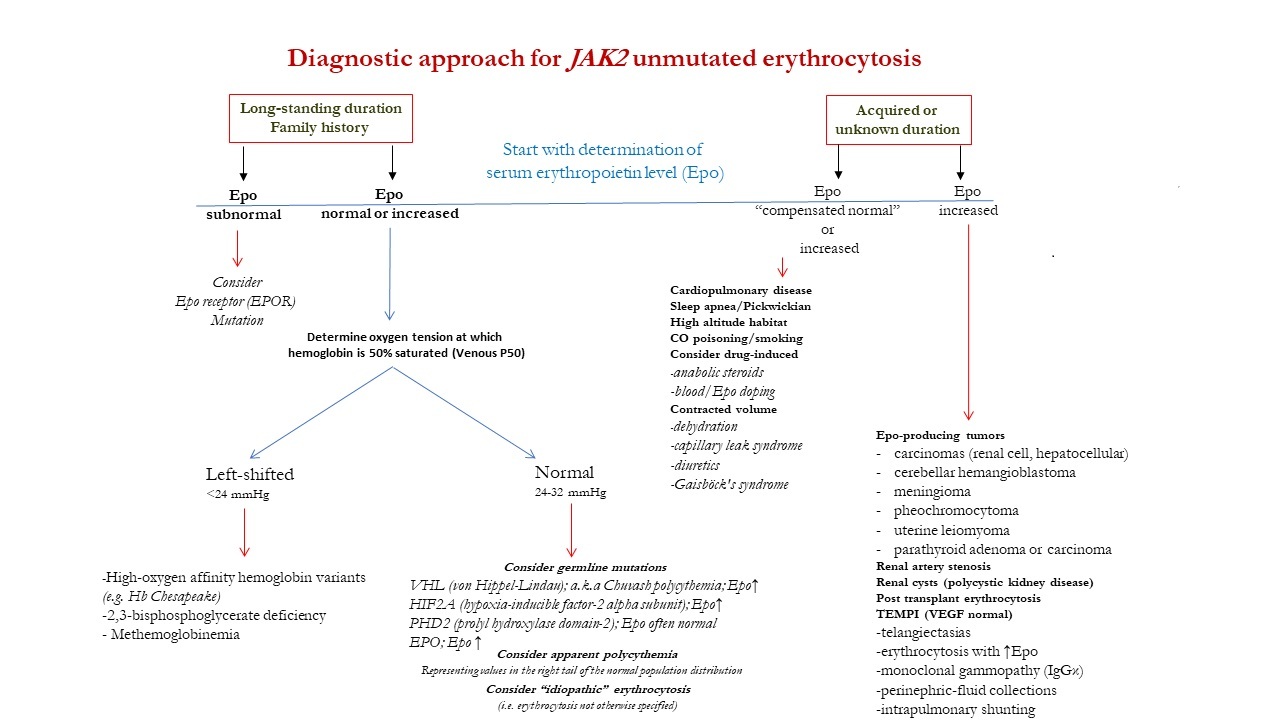In our myeloproliferative neoplasm (MPN) clinical practice at the Mayo Clinic, at least one in five referrals, pertain to the assessment of erythrocytosis other than polycythemia vera (PV). The authors Dr. Tefferi, Dr. Pardanani and I have over thirty, twenty and ten years, of clinical experience, in the MPN field, respectively. Our collaborator Dr. Szuber at the University of Montreal has recently published on the phenotypic comparison of secondary erythrocytosis and PV. The concept for our review paper stemmed from frequent case discussions with respect to evaluation and management of otherwise unexplained erythrocytosis. Based on our personal clinical experiences, we determined that it would be highly beneficial to lend clarity to required elements of both the diagnostic evaluation and therapeutic interventions for non-PV erythrocytosis. Therefore, in our review, on erythrocytosis, we incorporate three illustrative cases recently evaluated at the Mayo Clinic; constituting one each of hereditary, secondary acquired and “idiopathic” erythrocytosis, in order to highlight our systematic approach. We chronicle the discoveries related to the study of erythrocytosis, including pathophysiology of the oxygen sensing pathway, EPO signaling, and oxygen transport. In addition, we expand upon clinical conditions, albeit rare that are commonly encountered in the context of hereditary erythrocytosis. Furthermore, an over-view of the causes and management of secondary acquired erythrocytosis is also included. This synopsis is a product of countless hours of literature review, interpretation of findings followed by sketching of a simplified diagnostic and treatment algorithm which should serve as a quick resource for practicing hematologists. It is to be the noted that the study of erythrocytosis is continuously evolving, particularly with recent identification of EPO variants. Therefore, our future plans include fostering collaborations with our hematopathology colleagues in order to expand upon the clinically available diagnostics for evaluation of erythrocytosis.
The Chronicles of Erythrocytosis
Erythrocytosis, not associated with polycythemia vera (PV), encompasses a heterogenous group of hereditary, and acquired entities. In our review of the subject, a simplified yet comprehensive diagnostic and therapeutic approach to JAK2 unmutated erythrocytosis is presented.
Published in
Cancer

Like
Be the first to like this
Subscribe to the Topic
Cancer Biology
Life Sciences > Biological Sciences > Cancer Biology
-
Leukemia

This journal publishes high quality, peer reviewed research that covers all aspects of the research and treatment of leukemia and allied diseases. Topics of interest include oncogenes, growth factors, stem cells, leukemia genomics, cell cycle, signal transduction and molecular targets for therapy.






Please sign in or register for FREE
If you are a registered user on Research Communities by Springer Nature, please sign in